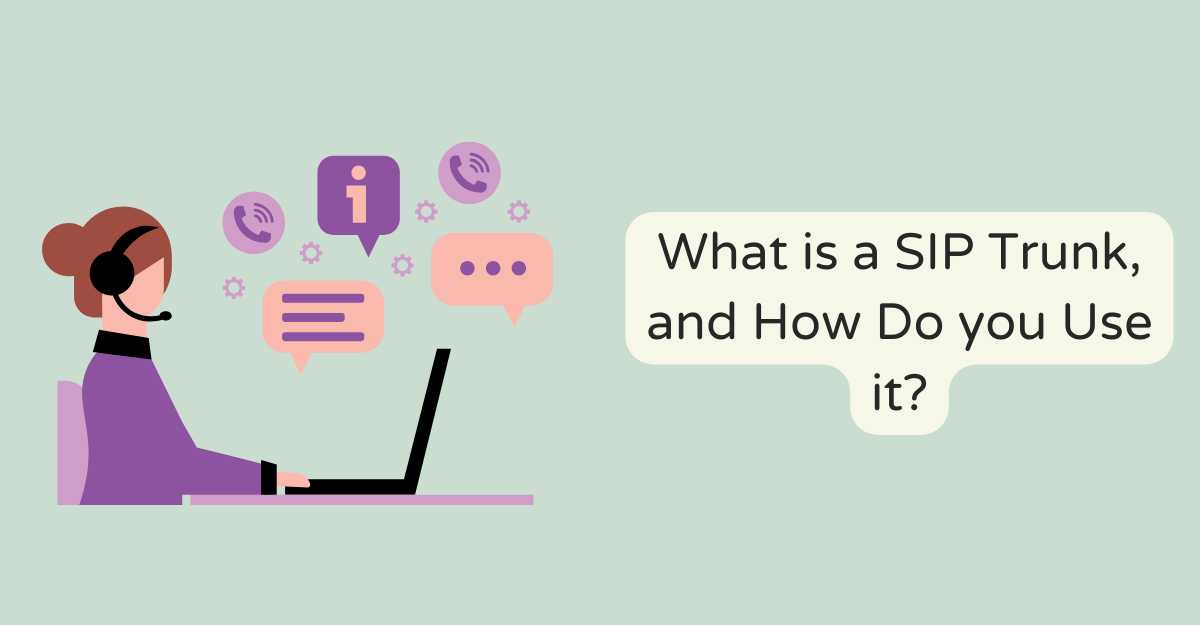
A business with a SIP trunk can add new lines instantly without physically installing new ISDN cables. It provides more flexibility and reliability for PBXs and allows employees to work on the go.
Look for providers that offer mobile failover and prioritize voice data over other forms of data. Also, ensure they use tier-1 networks with robust back-end networking muscle to guarantee call quality.
1. Voice
What is a SIP trunk? SIP trunks replace traditional telephone lines (also known as Plain Old Telephone Service or POTS) with session-initiated protocols that transfer voice signals over your business’s data network. All your client needs to get up and running is a reliable internet connection, a SIP-capable business phone system, and a reputable cloud-hosted communication provider.
The number of SIP Trunk channels a business needs depends on its volume and concurrent calls. To estimate this, a company can review its logs or call records and determine average calling patterns.
A key feature to prioritize when selecting a SIP trunk reseller is security. A provider that offers stringent cyber security policies and top-class solutions will help keep business communications secure. Also, look for month-to-month contracts to avoid getting locked into long-term agreements.
2. Video
Businesses can experience significant savings on their telephone communications costs by replacing PRI lines with SIP trunks. These are virtual connections to your business phone system (PBX) that use the internet.
SIP trunks are highly scalable. They allow you to add more channels and remove them when unused – so your phone system can grow with your business. You can offer more local and international numbers for remote working and customer service.
When choosing a SIP Trunk provider, look for one with its network and a clear cost structure that is easy to understand. Ask for a breakdown of the cost of each channel, the call tariffs, and any other charges. Also, examine any bundled minutes offers closely. It’s not uncommon for resellers to negotiate more competitive prices on behalf of their clients.
3. Messaging
In a world where remote and hybrid working is standard, keeping communications channels up and running smoothly at all times can be difficult. A SIP trunking solution enables clients to work from anywhere while maintaining full functionality.
Most clients are drawn to SIP trunking primarily because of its lower per-channel costs, far less than traditional phone line fees. However, the right provider offers other powerful features that make it a worthwhile investment for any business.
Look for a provider that runs its network rather than reselling service from another company. It ensures the best quality and security of your client’s data and services. It’s also essential that the provider has a solid backup power system on a georedundant infrastructure. It helps maintain call quality and continuity in a power outage or equipment failure.
4. Call Center
SIP trunking is ideal for call centers looking to save money and improve customer experiences. With recent cloud-driven technology trends, such as voice bots powered by natural language processing engines and omnichannel communication platforms that connect to your PBX via SIP trunk, you can deliver the kind of customer experiences customers have come to expect.
With SIP trunk, clients can enjoy cost savings by moving away from PRI lines and their associated per-minute charges.
To ensure your client’s satisfaction, look for a provider that offers month-to-month service and doesn’t charge for set-up or number porting. Examine bundled minute packages closely to ensure your clients only pay for what they need.
5. Analytics
With SIP trunk, businesses can save on line and rental costs and significantly reduce international and national call charges. It lowers the cost of customer service and improves business profitability.
By combining data and voice into one network, SIP trunks can help your company leverage the internet better, ensuring that all calls are delivered over the best possible connection. It helps to protect your brand image and increase employee productivity.
Final Words
It is essential to choose a SIP provider that has a strong track record of negligible downtime and provides exceptional support when problems arise. Also, look for a vendor that offers month-to-month, contract-free service. It will prevent you from getting stuck with a costly solution that doesn’t deliver. Mobile failover is another critical feature to look for.

